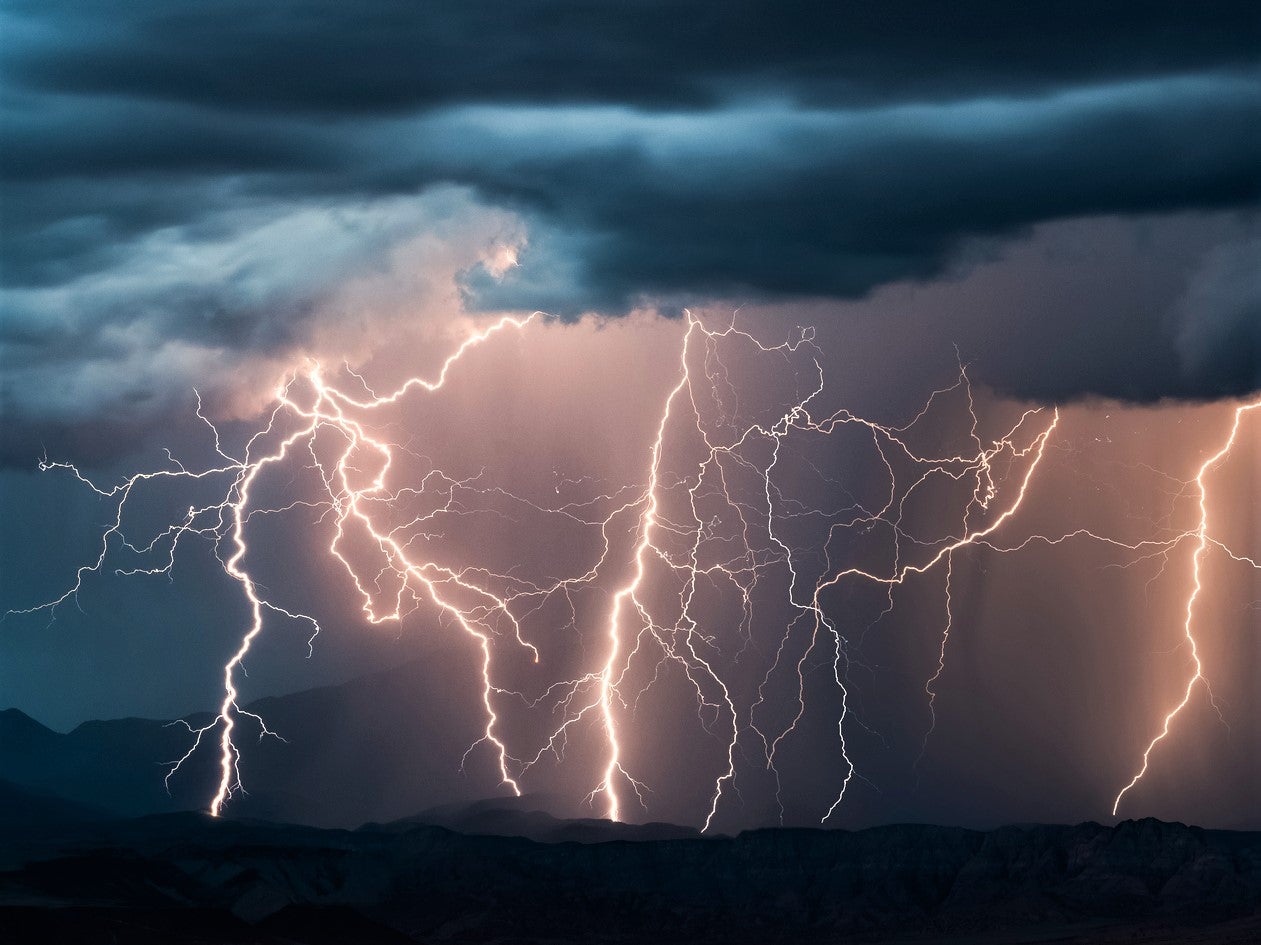Life on Earth kick-started by ‘a quintillion lightning strikes’, new study claims
Research also offers insight into potential extra-terrestrial life on similar rocky planets

Your support helps us to tell the story
From reproductive rights to climate change to Big Tech, The Independent is on the ground when the story is developing. Whether it's investigating the financials of Elon Musk's pro-Trump PAC or producing our latest documentary, 'The A Word', which shines a light on the American women fighting for reproductive rights, we know how important it is to parse out the facts from the messaging.
At such a critical moment in US history, we need reporters on the ground. Your donation allows us to keep sending journalists to speak to both sides of the story.
The Independent is trusted by Americans across the entire political spectrum. And unlike many other quality news outlets, we choose not to lock Americans out of our reporting and analysis with paywalls. We believe quality journalism should be available to everyone, paid for by those who can afford it.
Your support makes all the difference.The earliest life forms on Earth were formed from lightning strikes billions of years ago, according to a new study.
Scientists from the University of Leeds and Yale University in the US believe up to a quintillion bolts of lightning may have helped free up phosphorous required for the emergence of living organisms.
Their research offers insight into the formation of biomolecules and the origins of Earth’s earliest microbial life - and potential extra-terrestrial life on similar rocky planets. Phosphorus is a crucial part of the recipe for life. It makes up the phosphate backbone of DNA and RNA, hereditary material in living organisms, and represents an important component of cell membranes.
On early Earth, this chemical element was locked inside insoluble minerals. Until now, it was widely thought that meteorites that bombarded early Earth were primarily responsible for the presence of “bioavailable” phosphorus. Some meteorites contain the phosphorus mineral called schreibersite, which is soluble in water, where life is thought to have formed.
When a bolt of lightning strikes the ground, it can create glassy rocks called fulgurites by super-heating and sometimes vaporizing surface rock, freeing phosphorus locked inside. As a result, these fulgurites can contain schreibersite.
The researchers estimated the number of lightning strikes spanning between 4.5 billion and 3.5 billion years ago based on atmospheric composition at the time and calculated how much schreibersite could result. The upper range was about a quintillion lightning strikes and the formation of upwards of 1 billion fulgurites annually.
Read more:
Phosphorus minerals arising from lightning strikes eventually exceeded the amount from meteorites by about 3.5 billion years ago, roughly the age of the earliest-known fossils widely accepted to be those of microbes, they found.
“Lightning strikes, therefore, may have been a significant part of the emergence of life on Earth,” said Benjamin Hess, a Yale University graduate student in earth and planetary sciences and lead author of the study.
“Unlike meteorite impacts which decrease exponentially through time, lightning strikes can occur at a sustained rate over a planet’s history. This means that lightning strikes also may be a very important mechanism for providing the phosphorus needed for the emergence of life on other Earth-like planets after meteorite impacts have become rare,” Hess added.
The researchers examined an unusually large and pristine fulgurite sample formed when lightning struck the backyard of a home in Glen Ellyn, Illinois, outside Chicago. This sample illustrated that fulgurites harbour significant amounts of schreibersite.
“Our research shows that the production of bioavailable phosphorus by lightning strikes may have been underestimated and that this mechanism provides an ongoing supply of material capable of supplying phosphorous in a form appropriate for the initiation of life,” said study co-author Jason Harvey, a University of Leeds associate professor of geochemistry.
Among the ingredients considered necessary for life are water, carbon, hydrogen, nitrogen, oxygen, sulphur and phosphorus, along with an energy source.
Scientists believe the earliest bacteria-like organisms arose in Earth’s primordial waters, but there is a debate over when this occurred and whether it unfolded in warm and shallow waters or in deeper waters at hydrothermal vents.
“This model,” Hess said, referring to phosphorous unlocked by lightning, “is applicable to only the terrestrial formation of life such as in shallow waters. Phosphorus added to the ocean from lightning strikes would probably be negligible given its size.”
The research was published in the journal Nature Communications on Tuesday. It builds on ground-breaking experiments by the University of Chicago in 1953 and 1954, when scientists used a spark of electricity to form amino acids from inorganic molecules.
Additional reporting by agencies.
Subscribe to Independent Premium to bookmark this article
Want to bookmark your favourite articles and stories to read or reference later? Start your Independent Premium subscription today.
Join our commenting forum
Join thought-provoking conversations, follow other Independent readers and see their replies
Comments